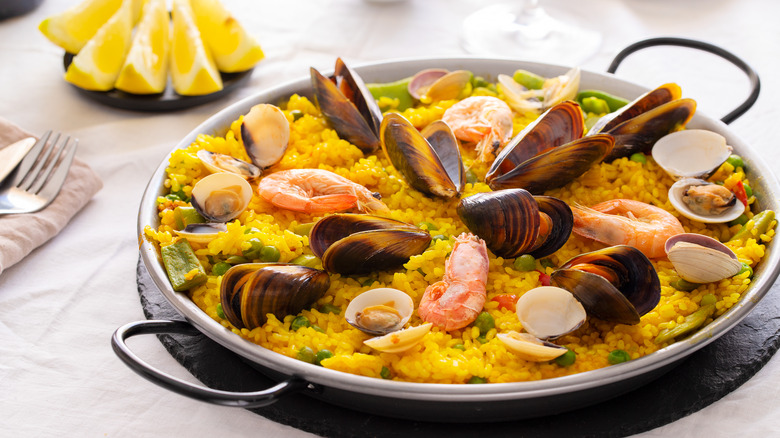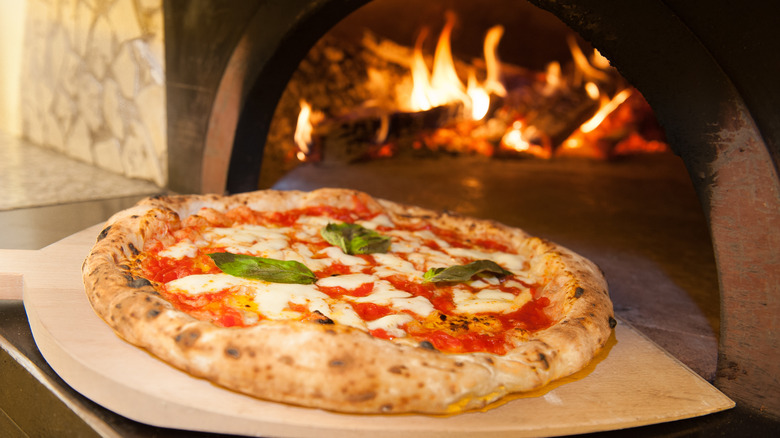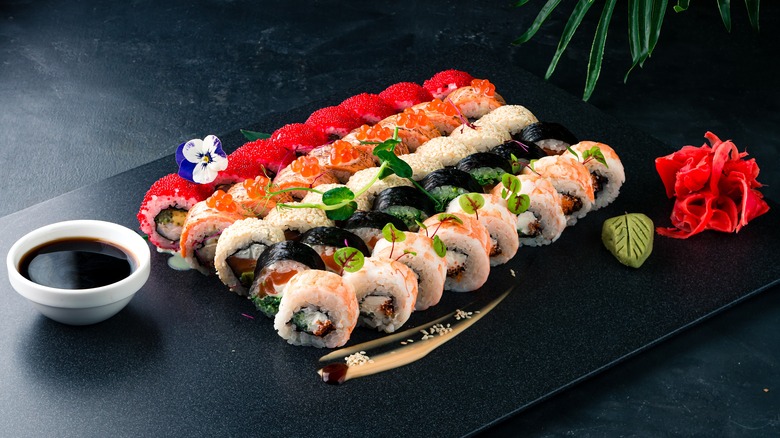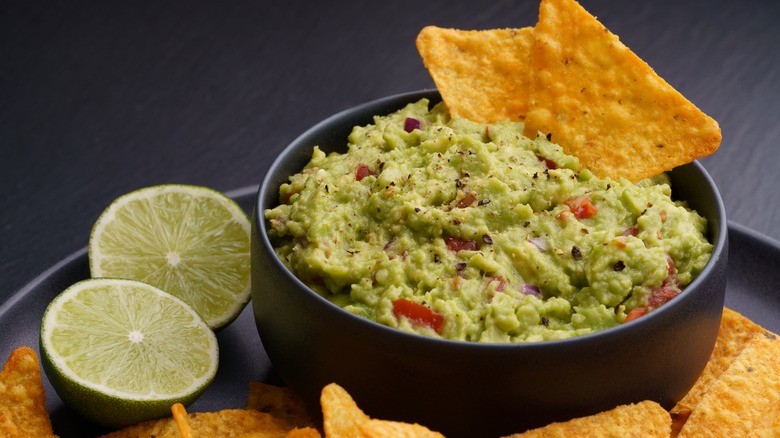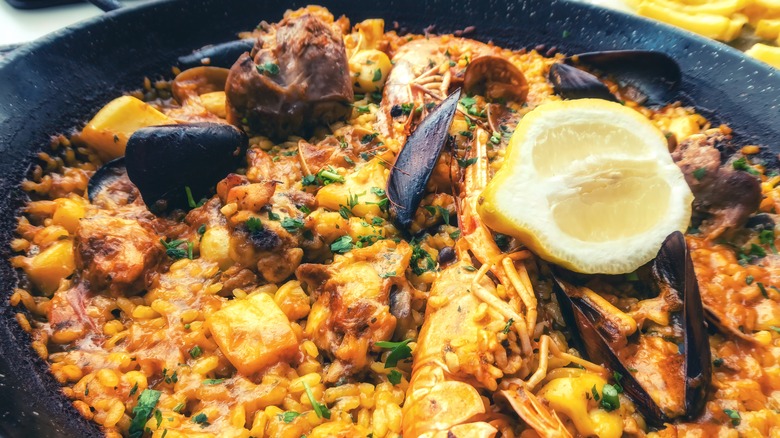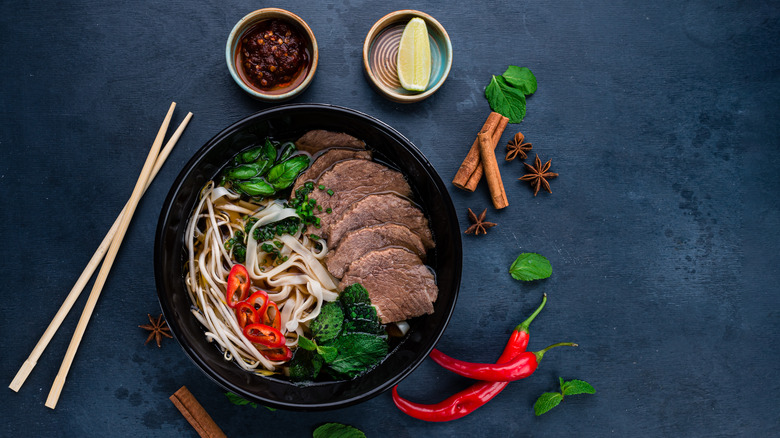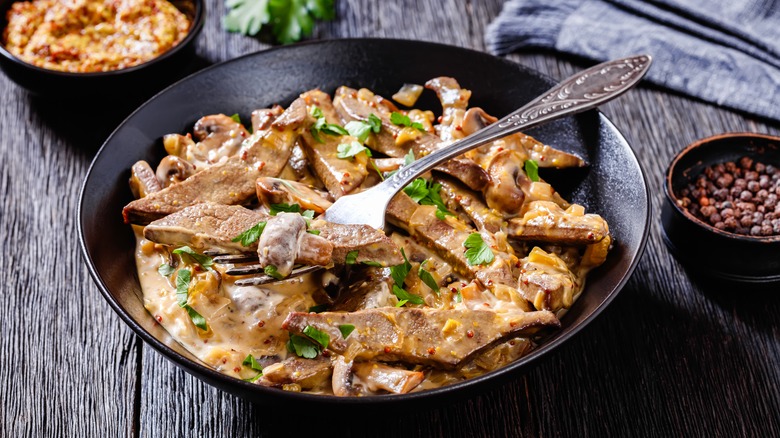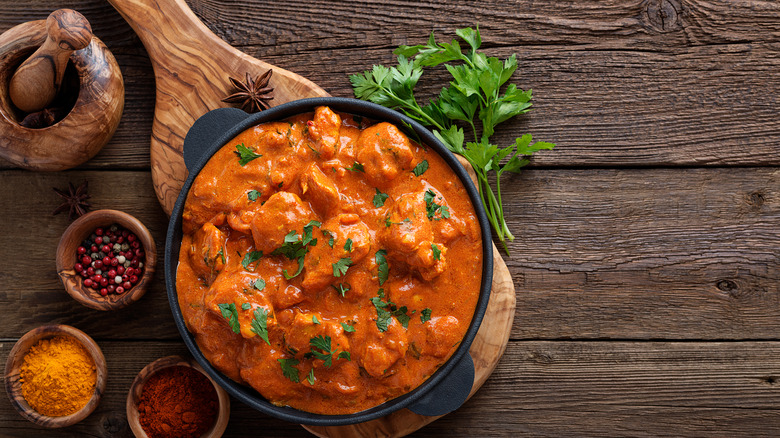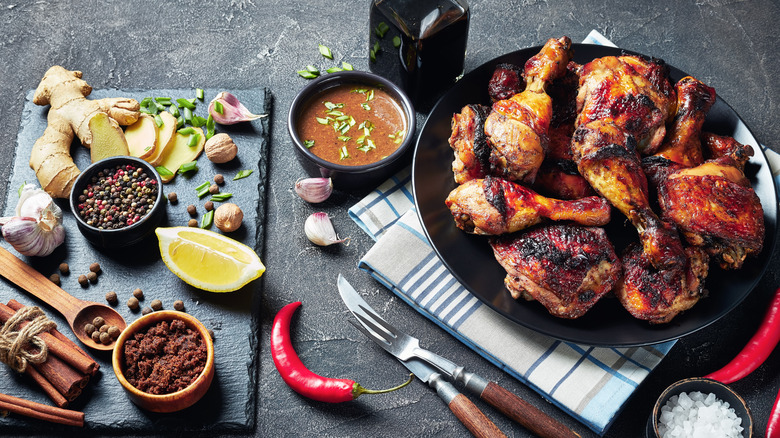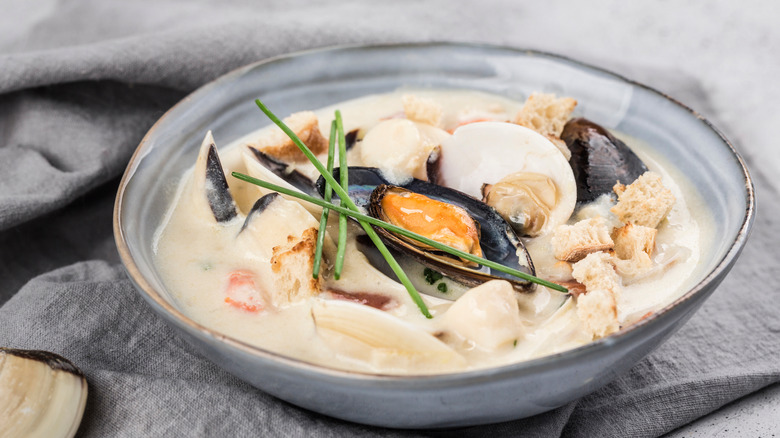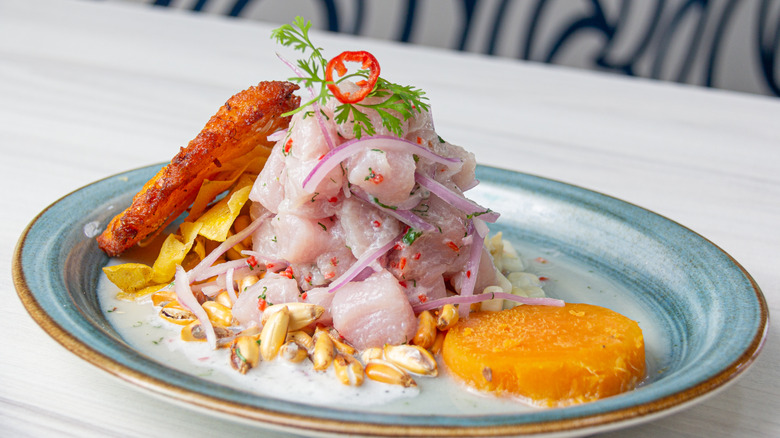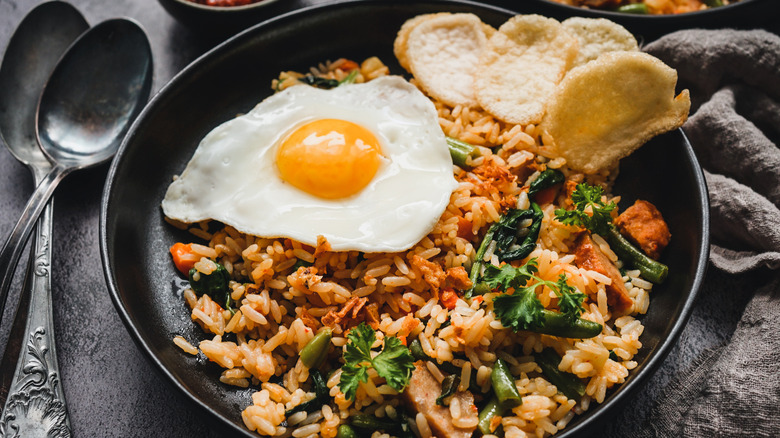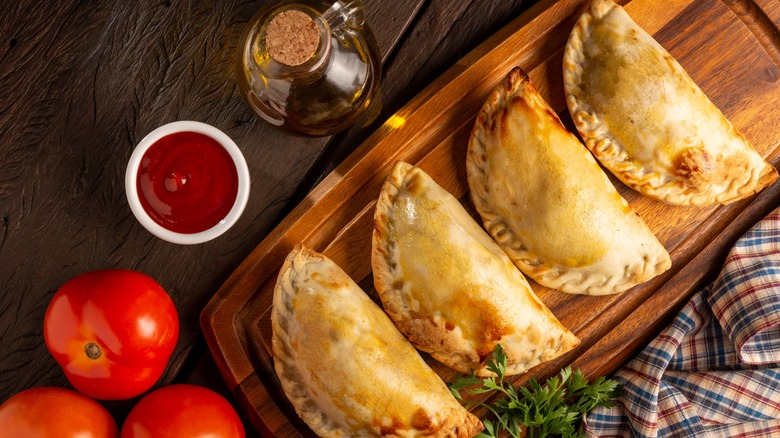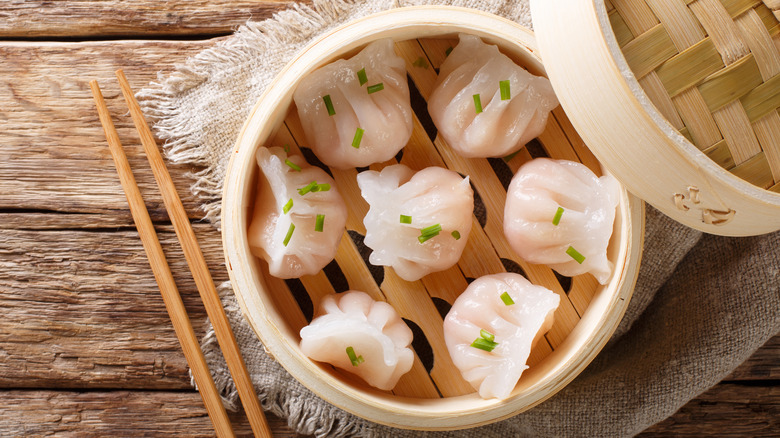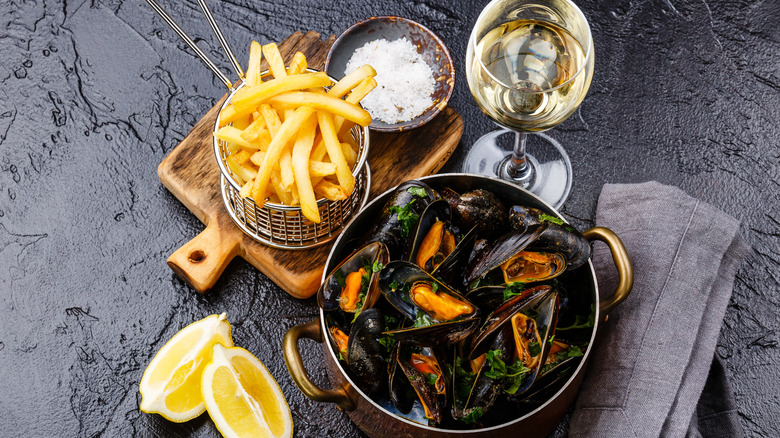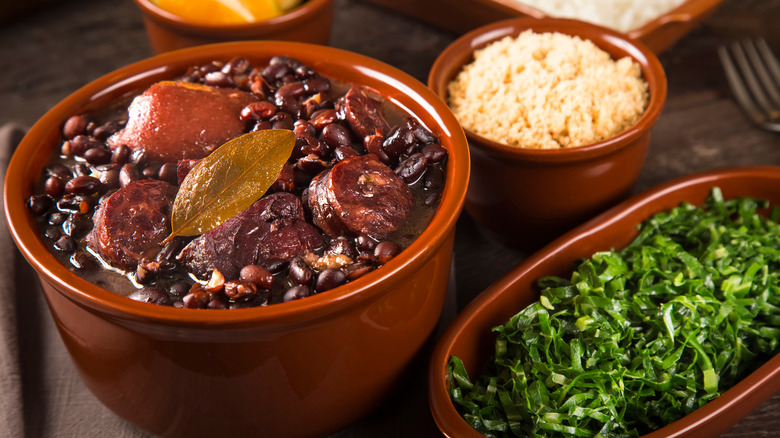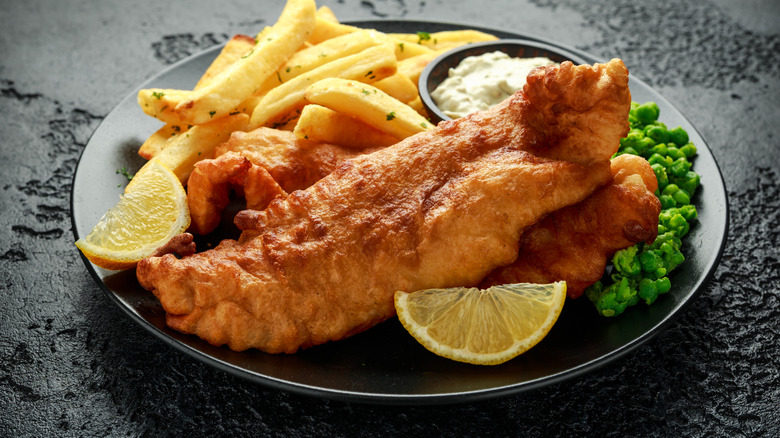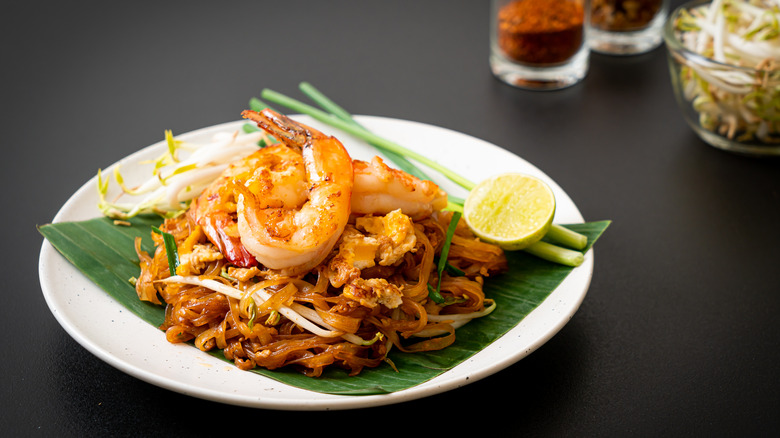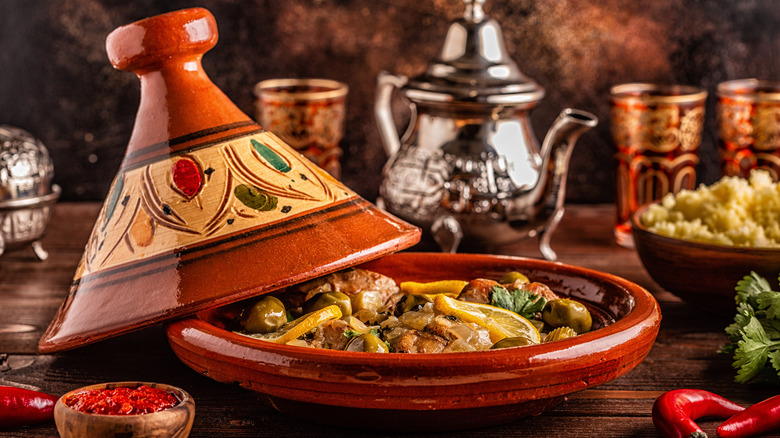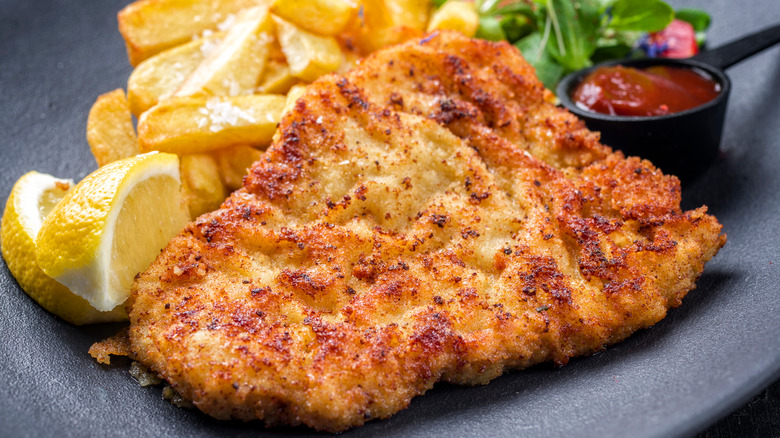22 Most Influential International Dishes Of All Time
Prepare yourself for a mouthwatering journey around the world as we celebrate the exceptional dishes that have left their mark on the international culinary stage. From humble street food gems to elaborate fine dining delights, each dish has significantly impacted its home country and beyond, earning superstar status in the eyes of food lovers worldwide. Get ready to savor the flavors of these legendary dishes and discover the stories behind their rise to global fame.
Whether you're an ambitious home cook or a food enthusiast seeking your next exceptional dining experience, this culinary journey will take you on a fascinating tour of the world's most famous and cherished dishes. From India's fragrant curry to Austria's golden wiener schnitzel, each dish has its own story to tell, evolving over time into the culinary classics we know and love. Join us on this gastronomic adventure that will inspire you and whet your appetite for these international masterpieces.
Pizza – Italy
The Italian pizza, an iconic and globally renowned dish, holds a special place as we kickstart our list of influential culinary creations. Originating in the vibrant streets of Naples, Italy, this beloved delicacy has transcended boundaries, leaving an indelible mark on gastronomy worldwide.
With humble origins tracing back to the early 1800s, pizza emerged as an affordable and satisfying meal for workers, featuring simple toppings. However, the pizza we are now all familiar with was served to Queen Margherita in 1889 on a visit to Naples. The chef at Pizzeria Brandi is said to have created a pizza topping of tomato, mozzarella, and basil, especially for the Queen, resembling the colors of the Italian flag. The pizzeria still stands today, marked by a plaque commemorating the event, and this iconic creation became known as the Margherita pizza.
As Italians immigrated to different corners of the world, they carried the secret to this irresistible creation. Pizza gained popularity in various countries, evolving and adapting to local tastes and ingredients, and 5 billion pizzas are now reportedly sold worldwide each year.
If you find yourself in Italy and looking for the ultimate pizza experience, try seeking out lesser-known, family-run restaurants away from the usual tourist routes. You may find a family recipe or unusual topping passed down through generations that will change your perspective on the perfect pizza. Just don't be surprised if your request for pineapple as a topping is met with disapproval!
Sushi – Japan
Ah, the delicate artistry of sushi, a visual masterpiece that is a testament to precision, freshness, and the pursuit of culinary perfection. Sushi has a history dating back to 2nd century China, where it was used as a preservation technique before making its way to Japan by the 8th century. Today, it is a culinary art form celebrated worldwide for its simplicity, elegance, and exquisite flavors.
One of the big attractions of sushi is its remarkable versatility. As it migrated beyond Japan's shores, sushi underwent fascinating adaptations. Though commonly associated with seafood, the concept of sushi has been extended to a vast array of ingredients, including vegan versions that utilize the vibrant colors and flavors of vegetables.
If you plan to make your own sushi, the freshness of ingredients is key. Opt for the highest quality seafood available, and select ripe and crisp vegetables to ensure ultimate texture. And know this: Perfect homemade sushi is possible, but it will take some practice.
Because sushi is so international, so immensely popular, you're bound to find a spot near you — and everyone always has their favorite sushi restaurant!
Guacamole – Mexico
Get ready for a zesty journey into Mexican cuisine with the classic guacamole. The ultimate in creamy richness, this side dish has become a symbol of Mexican food and a worldwide hit. The Aztecs created it in southern Mexico, and it has remained a popular dish in the country due to its superb flavor and the recognized health benefits of avocados.
Outside of Mexico, guacamole has made its mark on gastronomy around the world. Its popularity has soared recently, becoming a popular dip in various cuisines and inspiring creative interpretations.
The sheer brilliance of guacamole is that it achieves such an astonishing depth of flavor without even touching a stove! It all starts with perfectly ripe avocados mashed with a splash of onion, a fiery kick from a few chilis, and a generous squeeze of tangy lime. The result? A bowl brimming with zingy perfection. While many choose to incorporate fresh tomatoes and aromatic cilantro, the beauty of guacamole lies in its customizable nature, allowing you to tailor it to your taste preferences.
Guacamole makes the perfect accompaniment to so many dishes, including fajitas, tacos, quesadillas, and even a baked sweet potato. And let's be honest, it also makes a great snack eaten straight from the bowl on its own.
Paella – Spain
Enter the enchanting world of paella, a vibrant dish that embodies the essence of Spanish cuisine. With its bright colors, full-bodied flavors, and rich cultural heritage, paella has become an emblem of Spain while captivating tastebuds around the globe.
Hailing from sunny Valencia in the 18th century, Paella was initially eaten by farmers, taking advantage of the abundance of rice and fresh produce. 'La paella' was the name of the large pan the dish was cooked in, often over an open fire and enjoyed from the pan, without dishing into another bowl. Though the original recipe contained featured meat, paella has now become synonymous with seafood across the globe.
In Spain, paella has become a centerpiece of festive gatherings, symbolizing togetherness and celebration. Families and friends come together around the paella pan, engaging in lively conversations and indulging in the mouthwatering flavors of this beloved dish.
Beyond Spain's borders, paella has left a mark on international gastronomy. Chefs worldwide have embraced the essence of paella, incorporating its flavors, techniques, and spirit into their culinary creations. The combination of saffron-infused rice, succulent seafood or meat, and aromatic spices has inspired countless dishes, including the New Orleans classic jambalaya.
Paella is famous for its 'socarrat,' the crusty layer forming in the pan's bottom while cooking (via Ibérico Club). To create the perfect socarrat, leave the paella untouched while cooking, then turn the heat down for the final few minutes to prevent burning. This will create a delightful contrast of textures, with the rice remaining fluffy and moist at the top while the bottom develops a lovely golden crust.
Pho – Vietnam
Prepare to immerse yourself in the aromatic splendors of Vietnam with the iconic dish, Pho. Hailing from the Vietnamese streets, Pho is a treasured culinary masterpiece that holds enormous significance in its home country and has delighted palates worldwide.
Pho is a traditional Vietnamese soup consisting of thin rice noodles in a fragrant, slow-cooked broth. The broth is the heart and soul of Pho, typically crafted by simmering beef bones, aromatic spices, and herbs for hours, infusing it with layers of depth and richness.
Pho represents the essence of Vietnamese culinary heritage, reflecting the country's history and diverse regional influences. In northern Vietnam, you will come across the original pho, consisting of rice noodles, beef broth, and sliced beef. However, in the South, you will find a more varied approach where they are likely to add a variety of extra ingredients, changing the flavor profile.
To truly savor the best version of Pho – if you're making it at home – freshness is key. Prioritize quality ingredients. Look for clear broth, thinly sliced meat, and fresh herbs and garnishes. Authentic Pho depends on the marriage of flavors, so simmer the broth slowly, allowing it to develop its distinctive taste.
Beef Stroganoff – Russia
The next dish on our list is the creamy, comforting beef stroganoff. A Russian classic dating back to the 19th century and named after the influential Stroganov family, the dish was likely created by a French chef and has classic elements of both Russian and French cuisine.
Traditionally made with thinly sliced beef cooked in sour cream and mustard, beef Stroganoff became a symbol of luxury and indulgence. It gained popularity worldwide, making its way into restaurants in the United States by the 1950s.
To create your own mouthwatering version of beef Stroganoff, choose quality cuts that will retain their succulence after cooking, such as sirloin or tenderloin. Be sure to fry it in a hot pan to create an enticing crust on the meat without overcooking it. This delicious meal can be served equally well with fluffy rice or crusty bread to soak up the rich sauce. Finish it off with some fresh herbs, such as parsley.
Moussaka – Greece
Let's indulge in the rich, velvety flavor of moussaka, the hero of Greek cuisine. Though this dish originated in the middle east, it has become a symbol of Greek cooking and is cherished by the Greeks and food lovers worldwide.
The beauty of moussaka is in its tantalizing layers. Ground meat sautéed with onion, garlic, and oregano alternating with soft layers of eggplant and topped with a rich, velvety béchamel sauce. The sauce will seep through the layers and envelop them in a blanket of creamy extravagance.
As moussaka has become more popular worldwide, it has adopted several takes on the original lamb version. Beef is a common substitute for lamb and works just as well, and lentils can replace meat as a source of protein for a delicious vegetarian option.
No matter which version you choose, you will enjoy a harmonious combination of flavors that have made moussaka synonymous with Greece and a global culinary superstar.
Curry – India
Get set to explore a compelling landscape of vibrant and exotic flavors as we celebrate the timeless delight of curry. Originating in the Indian sub-continent, curry has emerged as an iconic culinary masterpiece, showcasing the spices and cooking techniques that define the region.
The word curry doesn't actually refer to one individual dish. It is generally used to describe an Indian-style dish served with a sauce. Within this broad category are dozens of different curries, from a mild and creamy korma to a fiery jalfrezi.
Curry's embrace by the U.K. has profoundly impacted the country's gastronomy, with British chefs and home cooks infusing their creative twists into this beloved culinary tradition. This fusion of cultures has given birth to delicious hybrids, such as the Chicken Tikka Masala, a luscious marriage of British and Indian flavors that has gained global recognition.
From the humblest curry house to the finest dining establishments, curry stands as a testament to the remarkable power of food to unite, inspire, and ignite passion on plates around the world.
Jerk chicken – Jamaica
Hailing from the beautiful island of Jamaica, this fiery and flavorful dish embodies the vibrant spirit of Caribbean cuisine.
Jerk Chicken has a distinctive flavor from the bold spices and herbs used in the marinade. Typically it will consist of fiery scotch bonnet peppers, allspice, and thyme, though other flavorings can be added.
With its origins rooted in the indigenous cooking techniques of the Taino people, jerk chicken showcases the historical culinary traditions of the region. It has evolved over time, influenced by the African and European flavors brought by the island's diverse inhabitants.
Jerk Chicken has significantly impacted the global culinary scene, its explosive combination of spices and tempting flavors catching the attention of chili lovers. You can now find variations of Jerk Chicken in restaurants and kitchens across the globe, delighting adventurous palates with its mouthwatering heat and aromatic spices.
Clam chowder – United States
Indulge in the comforting flavors of clam chowder, a dish that holds a special place in the culinary history of America. This thick, creamy soup originates from the coast of New England, showcasing the abundance of high-quality seafood that can be found in the waters there.
A traditional clam chowder consists of clams, potatoes, and onions with a signature creamy base. Other ingredients are often added, including vegetables such as carrots and celery and additional fish such as cod. However, when making clam chowder, think carefully before adding tomatoes – an attempt was made in 1939 to make it illegal!
Criminal culinary activities aside, New England-style clam chowder's popularity has spread across the states and beyond, particularly in coastal regions with succulent, fresh clams as heroes of the dish. Whether enjoyed as a comforting heat-me-up on a winter's day or a delicious seafood treat at the beach, clam chowder continues to be adored worldwide for its depth of flavor and warm and creamy indulgence.
Ceviche – Peru
Take your tastebuds on a journey to Peru and savor the irresistible flavors of ceviche. This legendary delicacy is an essential part of Peruvian gastronomy, embodying the lively coastal culture and the extraordinary wealth of seafood sourced from the Pacific's waters.
Ceviche is a fresh, delicately balanced dish that allows the flavor of fresh seafood to really shine. The fish is not cooked but instead is cured in a marinade of fresh lemon or lime juice. This gives the seafood a beautiful texture while retaining the high nutrition of the fish.
While the origin of ceviche dates back 2,000 years, the dish as we know it today was first invented in South America around 400 years ago – the fish would have been left to steep in the citrus marinade for hours. However, the popularity of raw fish in modern times means that ceviche is now usually served soon after preparation.
While in Mexican cuisine, ceviche often accompanies tortillas, traditional Peruvian ceviche is partnered with sweet potatoes and corn, with a sprinkle of cilantro on top to enhance the freshness of the dish.
Whether you're seeking a traditional Peruvian experience or modern interpretation, exploring the vibrant flavors of ceviche will ignite your culinary senses and transport you to the coastal paradise of Peru.
Nasi Goreng – Indonesia
Prepare for a culinary expedition like no other as you explore the enchanting world of Nasi Goreng in Indonesia. Considered their national dish, Indonesia's take on fried rice is a delicious blend of flavors and textures and is as versatile as it is tasty.
Served as breakfast, lunch, or dinner, Nasi Goreng can be adapted to suit any occasion and can feature various ingredients, from chicken and seafood to vegetables and tofu. When creating the perfect Nasi Goreng, two Indonesian ingredients are key — kecap manis and terasi. Kecap manis, a sweet and aromatic Indonesian soy sauce, adds a delectable richness to the dish, while terasi, a pungent shrimp paste, brings a unique depth of umami flavor to the ensemble.
Combine these gems with perfectly cooked, fluffy rice, and you've got yourself a masterpiece of culinary bliss, beckoning you to savor each mouthful and immerse yourself in the rich tapestry of Indonesian gastronomy.
Empanadas – Argentina
Let's venture into the delights of South American cuisine and discover the compelling charm of Argentinian empanadas. The ultimate finger food, empanadas are savory envelopes bursting with flavor and spice, encased in a flaky pastry shell.
The empanada is thought to have been brought to Argentina by the Spaniards in the 1500s and originally contained simple meat fillings. Over time, empanadas have evolved to include an assortment of fillings, from seafood and cheese to sweet versions containing fruit and nuts.
Empanadas are often enjoyed as street foods and have become associated with festivals and celebrations, connecting people through shared culinary experiences.
To find authentic empanadas, seek out local establishments known for their traditional recipes and time-honored techniques. Look for crispy, golden crusts with a generous filling, each bite transporting you to the heart of Argentina's gastronomic heritage. Experiment with unusual flavors and fillings, and savor the unique culinary journey that each empanada offers.
Dim sum – China
Get ready to dive into the fascinating realm of Chinese cuisine as we explore the exquisite flavors of dim sum. Originating from Guangdong province in China, dim sum has evolved into a culinary treasure that is a cherished tradition for the Chinese people.
Dim sum were originally invented as a small accompaniment to a pot of tea, and they are still eaten alongside tea today in a tradition known as yum cha (via Taste of the Orient). Historically enjoyed during leisurely brunches or lively family gatherings, dim sum embodies the spirit of togetherness.
The dim sum themselves are a sight to behold — a piece of art on a plate. They can be filled with various ingredients, with prawns and pork being popular choices. They can also be served as a dessert, filled with custard or sweet red bean paste.
The craftsmanship involved in creating these beautiful parcels is remarkable, and when served in traditional steamer baskets, the meal is a visual masterpiece and a delicious celebration of Chinese heritage.
Moules frites – Belgium
Belgium's delicious world of moules frites is — to put it mildly — scrumptiously mouthwatering! This dish is the ultimate comfort food for seafood fans, combining healthy, fresh mussels with crunchy, moreish fries.
Moules frites is the perfect marriage of land and sea — succulent shellfish cooked in a delicious garlicky broth with a side of Belgium's famous golden, crispy fries in a combination of flavors and textures that captivates the senses.
The concept of pairing mussels with fries is believed to have started in Belgium in the 1700s, as mussels were abundant and affordable, even during the colder months when other fish options were scarce.
Today, you can find moules frites on menus in Belgium and beyond, often served in generous portions meant for sharing among friends and family, connecting people through pure gastronomic pleasure.
So, if you're looking to indulge in the authentic taste of Belgium, grab yourself a steaming bowl of mussels accompanied by a side of crispy fries, and experience a true culinary delight that has stood the test of time.
Feijoada – Brazil
Brazil's national dish of feijoada is an excellent option if you are in the mood for a hearty and filling stew. Traditionally made with black beans and different cuts of pork, this slow-cooked meal is the perfect example of healthy comfort food. Thanks to the beans, it is high in fiber and protein and is often served with green vegetables, providing a wide range of vitamins.
Traditionally served on a Wednesday, eating feijoada is a social event, with families gathering around the table to bond and enjoy a sumptuous feast together. The preparation of the dish can be as much a part of this as eating it, with multiple family members often contributing their unique tips passed down through generations.
If you're recreating feijoada at home, use quality ingredients and cook it slowly to let the flavors develop. Gather your loved ones around the table, share stories and laughter, and create lasting memories as you indulge in the comforting embrace of feijoada.
Doner kebab – Turkey
When it comes to Turkish cuisine, no dish is more iconic than the doner kebab. This beloved food is not only a Turkish classic, it has become a worldwide street food staple, offering a quick, satisfying meal on the go.
Traditionally made with lamb but now often featuring chicken or beef, the phrase doner kebab means 'rotating meat,' referring to the vertical rotisserie it spins upon. This cooking method allows the meat to slowly rotate and cook evenly, resulting in tender and flavorful slices. As the meat cooks, it is shaved into long strips and served on pita bread or a bed of rice, often accompanied by tomatoes and tzatziki.
Doner kebab has gained international popularity and has been adapted and reinvented in different culinary traditions, adding unique twists and flavors. Today, you can find doner kebab stands and restaurants in cities around the world, showcasing the enduring impact of this Turkish culinary delight.
Fish and chips – Great Britain
There is no more quintessentially British dish than the seaside classic fish and chips. Whether in a quaint beachside cafe or a fine dining restaurant, the mouthwatering combination of crispy, battered fish and thick, salty chips never fails to satisfy.
The first fish and chip shop opened in England in the 1860s, and by the start of the 20th century, there were 'chippies' popping up across the nation. Today, fish and chips continue to evoke a sense of nostalgia and memories of seaside holidays, picnics in the park, and fun moments shared with loved ones.
Traditionally served in newspaper, slathered in salt and vinegar, and accompanied by mushy peas and tartar sauce, fish and chips is a genuinely iconic British experience. In all corners of Britain, from the fishing villages of Fife in Scotland to the island of Anglesey in Wales and the seaside town of Whitby in England, it holds an esteemed place in the hearts of Britons, young and old.
Pad Thai – Thailand
Brace yourself for a rollercoaster of flavors as we uncover the taste sensation of Pad Thai. This iconic stir-fry dish is a symphony of tantalizing tastes, combining delicate rice noodles, succulent shrimp, and an assortment of fragrant herbs and spices. As with all Thai food, the magic of Pad Thai lies in its perfectly balanced combination of ingredients, complemented by the zesty tamarind sauce. The dish is often garnished with crushed peanuts, fresh lime, and a sprinkle of chili flakes, adding layers of texture and heat.
As Thai cuisine gains popularity worldwide, Pad Thai has emerged as a standout dish, beloved for its exquisite balance of flavors and versatility. Whether savoring it on the bustling streets of Bangkok or recreating it in your own kitchen, Pad Thai promises an unforgettable culinary journey through the heart of Thai cuisine.
Bratwurst – Germany
Step into the sizzling world of Bratwurst, one of the most iconic dishes that Germany proudly calls its own. Whether enjoyed at a bustling street market or in a cozy beer garden, Bratwurst ignites a fire of passion in the hearts and tastebuds of Germans and food enthusiasts worldwide.
Traditionally, bratwurst would be made with pork, but it can also consist of veal or beef or a mix of two types of meat. It is then heavily seasoned with herbs, spices, and garlic to create a savory delight that goes perfectly with the classic accompaniments of mustard and red cabbage.
To recreate the magic of bratwurst, try to source authentic wurst from a specialty store or German market. Then fire up the grill, invite your friends and family to join you — and be sure to keep the beer flowing. Get ready to feast the German way and enjoy every moment!
Tagine – Morocco
Welcome to the beautiful world of Moroccan cuisine, where the star of the show is the classic savory stew, tagine. The word tagine refers to both the meal and the unique cone-shaped pot in which the food is cooked. A tagine will generally consist of meat such as lamb, chicken, or beef, though vegetarian versions are common too. The protein is accompanied by fresh vegetables such as tomatoes, onions, and peppers, making the dish both delicious and full of nutrition.
In Moroccan households, the preparation and sharing of tagine bring families and friends together, creating unforgettable moments of warmth and hospitality. The act of savoring a tagine is not just about nourishment, it is an experience that engages all the senses. With its enticing aromas, deep flavors, and hearty texture, treating yourself to a tagine will be like embarking on a culinary journey through Moroccan culture.
Weiner schnitzel – Austria
It's time to explore the national dish of Austria — the wiener schnitzel. This crispy golden masterpiece is beloved throughout Austria and across the globe.
Traditionally made with veal, the dish consists of a tenderized and thinly pounded meat cutlet, breaded and then fried to perfection. The result is a juicy interior covered in a delectable crispy crust, providing a satisfying contrast of textures with every bite. The dish pairs wonderfully with traditional Austrian sides such as warm potato salad or creamy cucumber salad, creating a balanced symphony of flavors.
The popularity of wiener schnitzel goes far beyond Austria's borders, spreading its irresistible appeal across the globe. Many renowned restaurants and eateries worldwide have embraced the art of crafting this flavorful dish, making wiener schnitzel a worthy ambassador for Austrian cuisine.
From cozy family-run establishments to high-end fine dining restaurants, cooks take pride in mastering the art of creating a perfect wiener schnitzel, ensuring that this special dish continues to delight tastebuds and bring joy to diners around the world.

